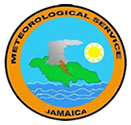On this World Water Day when the campaign focuses on reducing and reusing wastewater, we take the opportunity to learn from nature how to exploit wastewater for a global benefit.
Wastewater recharges oceans, lakes and rivers via surface runoff and groundwater. Most of the water vapour in the atmosphere comes directly through evaporation from the surface of these waterbodies. Clouds are formed when water vapour in warm air rises and condenses as water droplets to form cotton ball-resembling structures in the sky. Rain falls when water droplets in a cloud become heavy enough to overcome gravity and deposits fresh water to the earth.
So, from evaporation to rainfall, wastewater is a great foundation resource in the ultimate global distribution of fresh water. On a daily basis the hydrological cycle is making use of wastewater so why are we not exploiting wastewater more in our daily living? There are valuable nutrients and recoverable material being lost every day in wastewater. Globally, over 80% of the wastewater generated in our homes, cities and industry flows back to nature without being treated or reused (World Water Day Factsheet, 2017).
In our homes, we can reuse wastewater from baths, sinks and washing machines on our lawns and gardens; rainwater collected from our rooftops can be used to wash our vehicles. In our cities, treated wastewater can be used to irrigate green spaces. In industry and agriculture, wastewater can be treated for usage in cooling systems and large-scale irrigation.
Today on World Water Day we acknowledge how clouds use wastewater in the ultimate return of fresh water to the environment and tomorrow on World Meteorological Day in Understanding Clouds, we will celebrate the other roles of clouds, their beauty in the various forms and their inspiration to artists and artistes throughout history.



